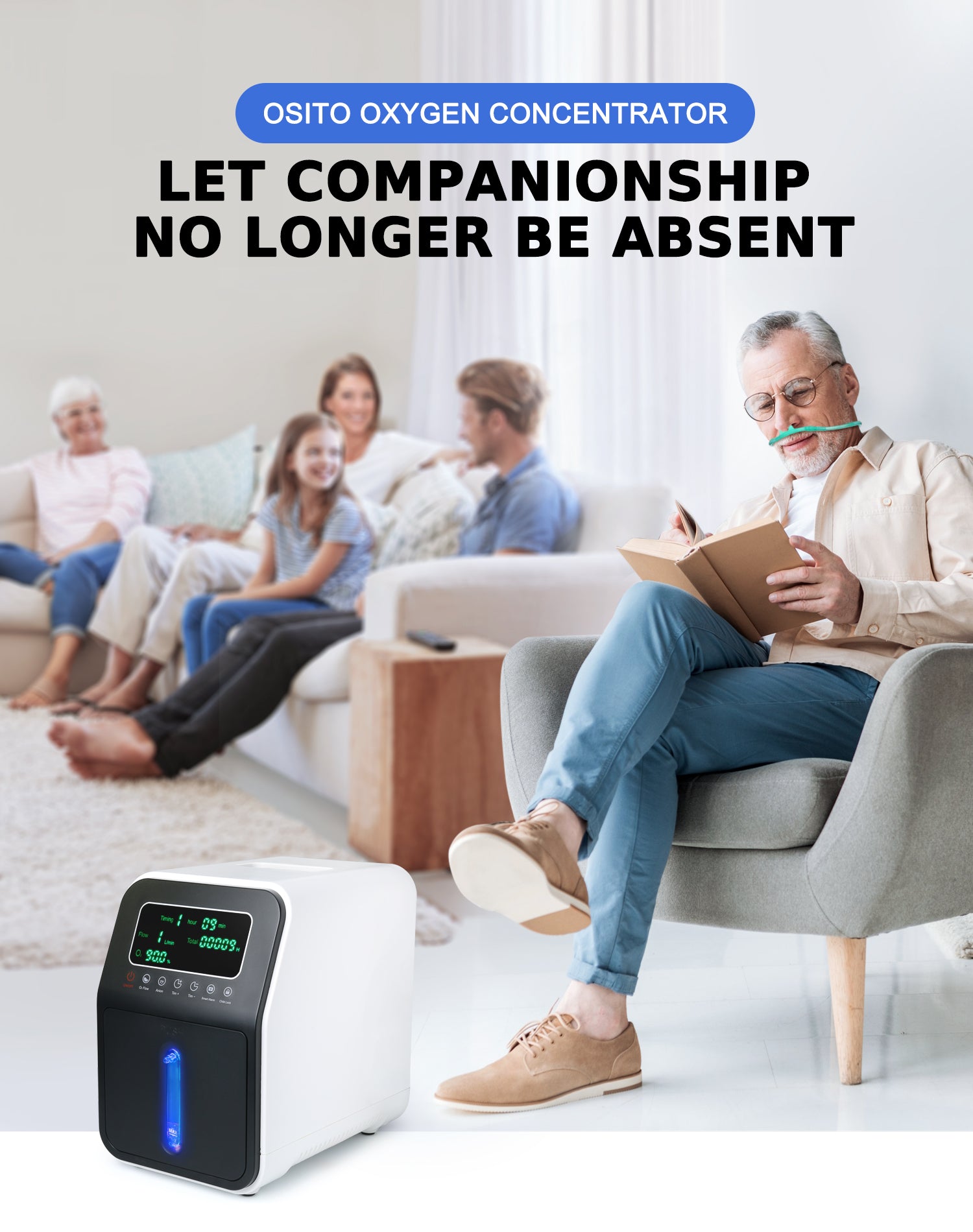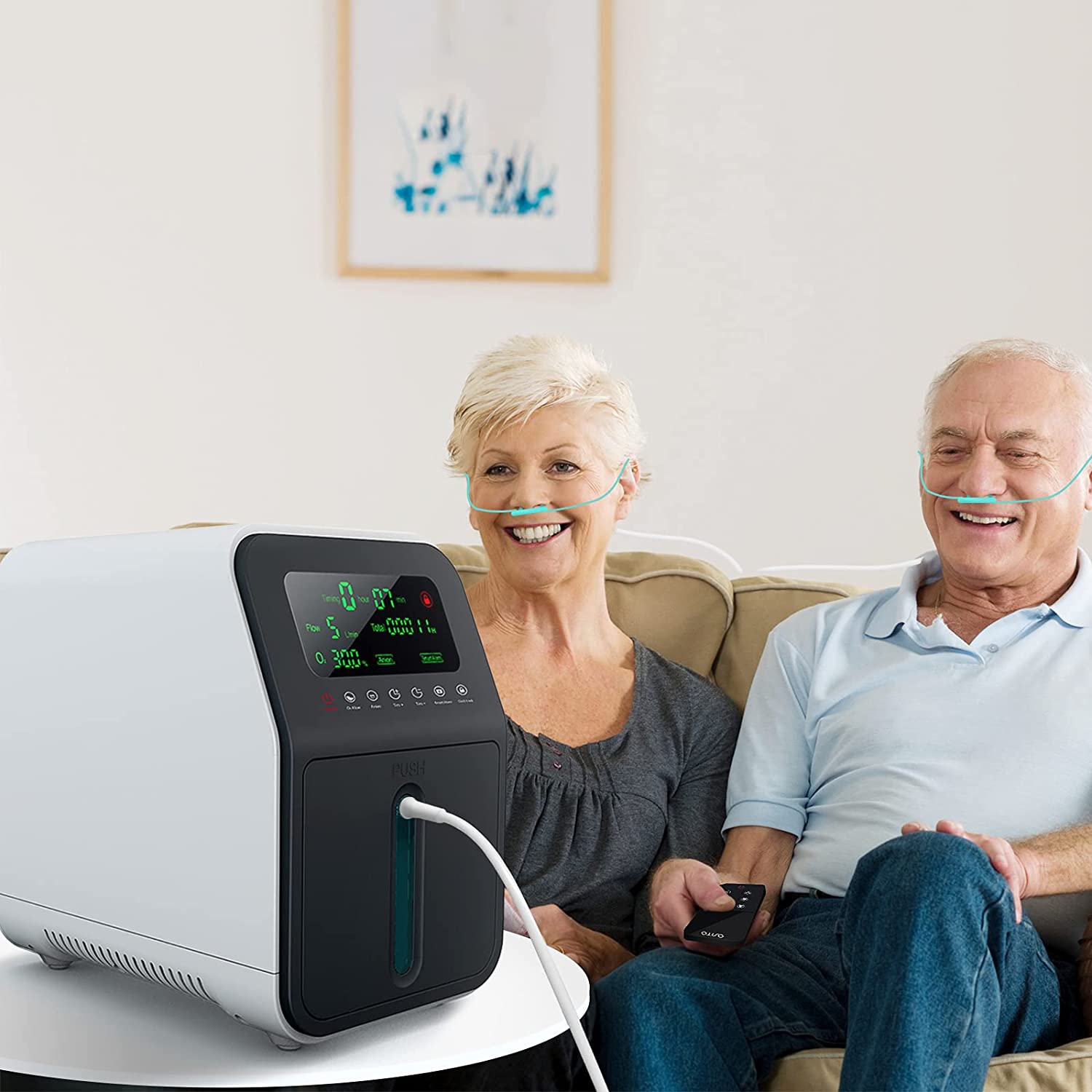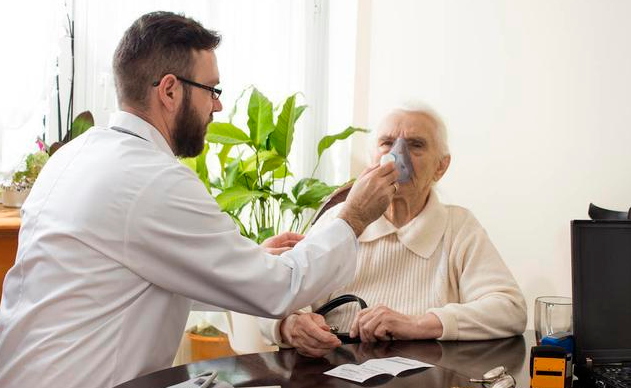Recently, the rush to buy oxygen concentrators has attracted social attention. This medical device that can provide oxygen at home and reduce "silent hypoxia" is suitable for which group of people? What issues should be paid attention to when purchasing?
What is an oxygen concentrator?
According to the official website of the State Food and Drug Administration, oxygen concentrators are also called small molecular sieve oxygen concentrators, medical molecular sieve oxygen concentrators, portable oxygen concentrators, etc. Its basic working principle is to use the principle of pressure swing adsorption (PSA) and use air as raw material without any additives. After the power is turned on, it adsorbs nitrogen and other gases in the air and separates high-purity oxygen (93%±3%) from the air.
Oxygen concentrators generally consist of an oxygen concentrator host, a flow meter, a humidifier, and an oxygen concentration status indicator. The oxygen concentration status indicator can sound an alarm when the oxygen concentration is lower than 82% to prevent users from inhaling gases that do not meet the oxygen concentration requirements.
Is an oxygen concentrator a medical device?
As we all know, my country implements classified management of medical devices according to the degree of risk.
According to the "China Medical Device Product Classification Catalog", oxygen concentrators are currently classified as Class II medical devices in my country, and they need to obtain a "Medical Device Registration Certificate" issued by the National Drug Administration before they can be put on the market. Its manufacturers need to obtain a "Medical Device Production License" issued by the drug administration department, and the sales unit should have a "Class II Medical Device Business Registration Certificate".
Therefore, whether the name is "medical oxygen concentrator", "home oxygen concentrator", "small oxygen concentrator" or "molecular sieve oxygen concentrator", it is essentially a "medical oxygen concentrator" and should have a medical device registration certificate.
Who is the oxygen concentrator suitable for?
In general, oxygen concentrators are suitable for patients with cardiovascular and cerebrovascular diseases and respiratory diseases who have already developed hypoxemia, and the more representative ones are patients with chronic obstructive pulmonary disease. In addition, patients with other diseases with hypoxemia, as well as high-altitude pulmonary edema, acute mountain sickness, high-altitude coma, etc. caused by thin environmental oxygen, also need oxygen therapy as soon as possible.
For ordinary consumers, experts pointed out that oxygen concentrators are mainly used by patients with chronic respiratory diseases, and generally healthy families do not need to configure oxygen concentrators at home. If you experience chest tightness, wheezing, difficulty breathing or other symptoms of hypoxia, you should go to the hospital immediately. It is not advisable to use an oxygen concentrator at home. Excessive oxygen concentration or prolonged oxygen inhalation can easily lead to oxygen poisoning and cause danger.
Purchase precautions
Oxygen concentration is the core indicator of the oxygen concentrator. YY/T 0298-1998 "General Technical Specifications for Medical Molecular Sieve Oxygen Concentrators" requires that the oxygen concentration of the oxygen concentrator be ≥90% (v/v), oxygen should be odorless, moisture content ≤0.07g/m3, and carbon dioxide content ≤0.01% (v/v).
For the noise of the oxygen concentrator, YY 0732- 2009 "Medical Oxygen Concentrator Safety Requirements" stipulates that under normal use conditions, the maximum noise of the oxygen concentrator should not exceed 60dB. YY/T 0298-1998 "General Technical Specifications for Medical Molecular Sieve Oxygen Concentrators" requires that the noise of the oxygen concentrator should not exceed 85 dB.
YY 0732-2009 "Medical Oxygen Concentrator Safety Requirements" also stipulates that the gas temperature at the outlet of the oxygen concentrator should not exceed the ambient temperature by 6°C. The maximum gas temperature should not exceed 46°C to avoid thermal damage to the human body.
As an ordinary consumer, before choosing to buy an oxygen concentrator, you should consult a professional doctor for advice, correctly understand the oxygen inhalation time and oxygen flow requirements for your indications, and then choose the appropriate model product and use it reasonably according to the instructions.
What is an oxygen concentrator?
According to the official website of the State Food and Drug Administration, oxygen concentrators are also called small molecular sieve oxygen concentrators, medical molecular sieve oxygen concentrators, portable oxygen concentrators, etc. Its basic working principle is to use the principle of pressure swing adsorption (PSA) and use air as raw material without any additives. After the power is turned on, it adsorbs nitrogen and other gases in the air and separates high-purity oxygen (93%±3%) from the air.
Oxygen concentrators generally consist of an oxygen concentrator host, a flow meter, a humidifier, and an oxygen concentration status indicator. The oxygen concentration status indicator can sound an alarm when the oxygen concentration is lower than 82% to prevent users from inhaling gases that do not meet the oxygen concentration requirements.
Is an oxygen concentrator a medical device?
As we all know, my country implements classified management of medical devices according to the degree of risk.
According to the "China Medical Device Product Classification Catalog", oxygen concentrators are currently classified as Class II medical devices in my country, and they need to obtain a "Medical Device Registration Certificate" issued by the National Drug Administration before they can be put on the market. Its manufacturers need to obtain a "Medical Device Production License" issued by the drug administration department, and the sales unit should have a "Class II Medical Device Business Registration Certificate".
Therefore, whether the name is "medical oxygen concentrator", "home oxygen concentrator", "small oxygen concentrator" or "molecular sieve oxygen concentrator", it is essentially a "medical oxygen concentrator" and should have a medical device registration certificate.
Who is the oxygen concentrator suitable for?
In general, oxygen concentrators are suitable for patients with cardiovascular and cerebrovascular diseases and respiratory diseases who have already developed hypoxemia, and the more representative ones are patients with chronic obstructive pulmonary disease. In addition, patients with other diseases with hypoxemia, as well as high-altitude pulmonary edema, acute mountain sickness, high-altitude coma, etc. caused by thin environmental oxygen, also need oxygen therapy as soon as possible.
For ordinary consumers, experts pointed out that oxygen concentrators are mainly used by patients with chronic respiratory diseases, and generally healthy families do not need to configure oxygen concentrators at home. If you experience chest tightness, wheezing, difficulty breathing or other symptoms of hypoxia, you should go to the hospital immediately. It is not advisable to use an oxygen concentrator at home. Excessive oxygen concentration or prolonged oxygen inhalation can easily lead to oxygen poisoning and cause danger.
Purchase precautions
Oxygen concentration is the core indicator of the oxygen concentrator. YY/T 0298-1998 "General Technical Specifications for Medical Molecular Sieve Oxygen Concentrators" requires that the oxygen concentration of the oxygen concentrator be ≥90% (v/v), oxygen should be odorless, moisture content ≤0.07g/m3, and carbon dioxide content ≤0.01% (v/v).
For the noise of the oxygen concentrator, YY 0732- 2009 "Medical Oxygen Concentrator Safety Requirements" stipulates that under normal use conditions, the maximum noise of the oxygen concentrator should not exceed 60dB. YY/T 0298-1998 "General Technical Specifications for Medical Molecular Sieve Oxygen Concentrators" requires that the noise of the oxygen concentrator should not exceed 85 dB.
YY 0732-2009 "Medical Oxygen Concentrator Safety Requirements" also stipulates that the gas temperature at the outlet of the oxygen concentrator should not exceed the ambient temperature by 6°C. The maximum gas temperature should not exceed 46°C to avoid thermal damage to the human body.
As an ordinary consumer, before choosing to buy an oxygen concentrator, you should consult a professional doctor for advice, correctly understand the oxygen inhalation time and oxygen flow requirements for your indications, and then choose the appropriate model product and use it reasonably according to the instructions.




Leave a comment
This site is protected by hCaptcha and the hCaptcha Privacy Policy and Terms of Service apply.